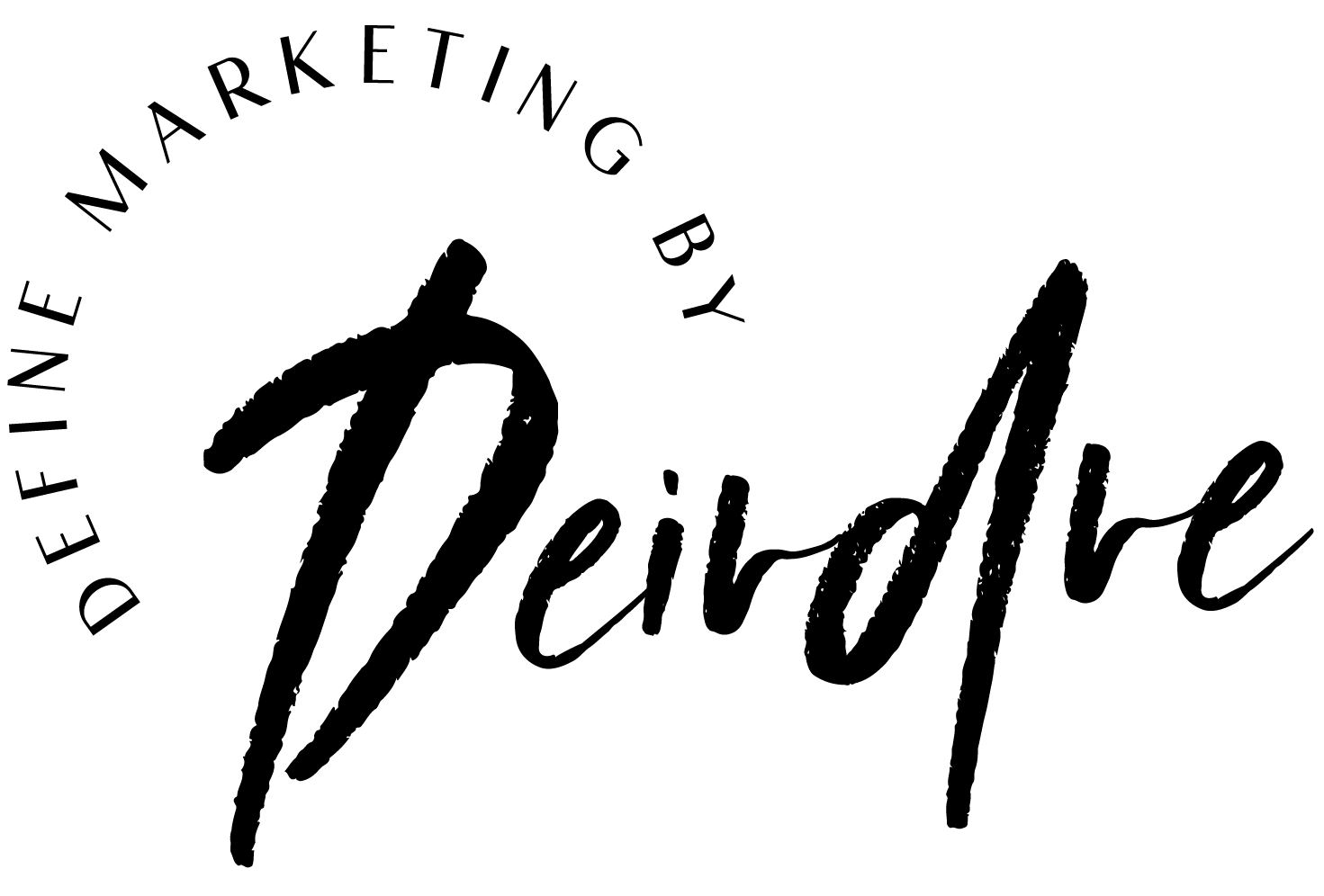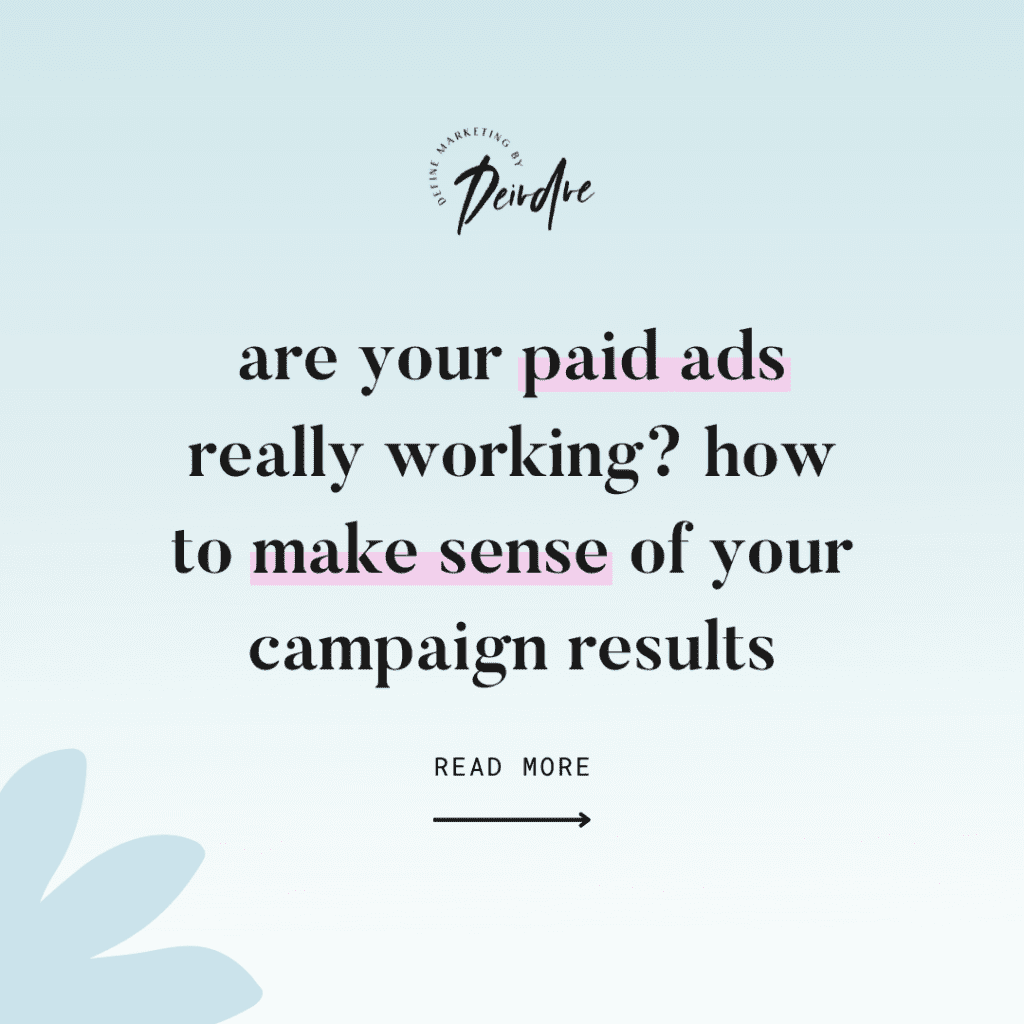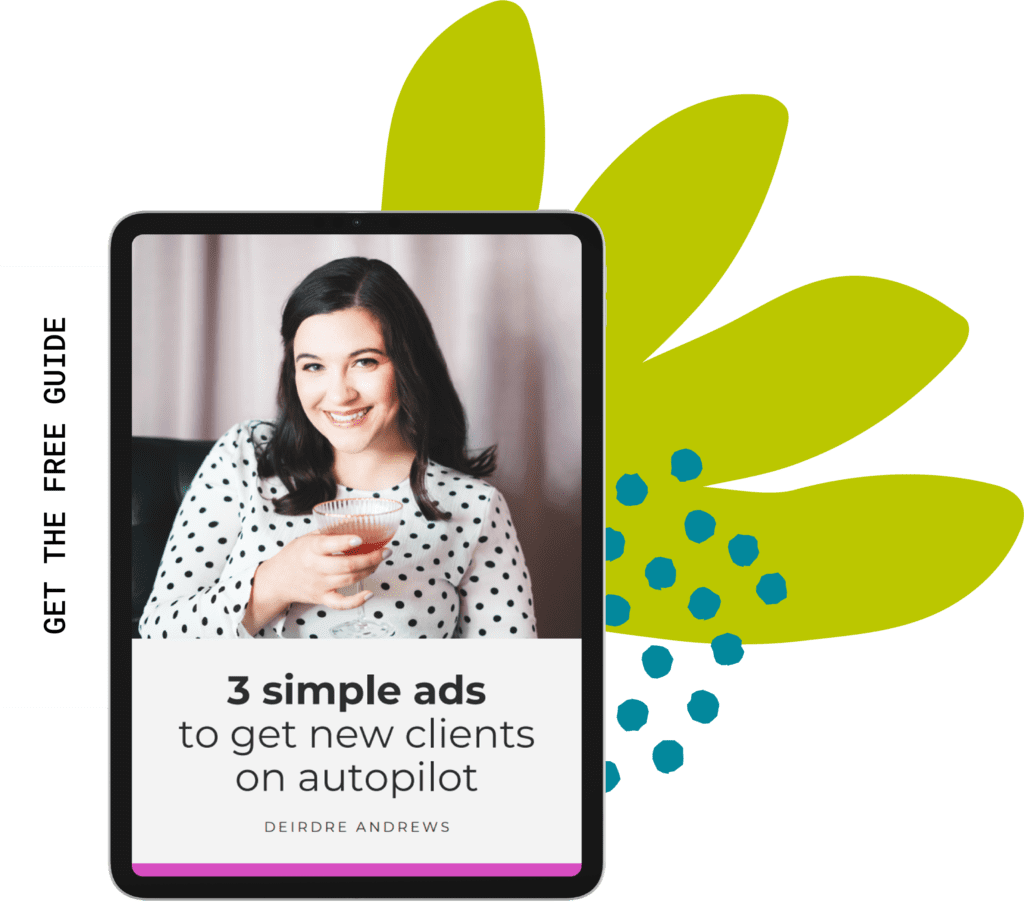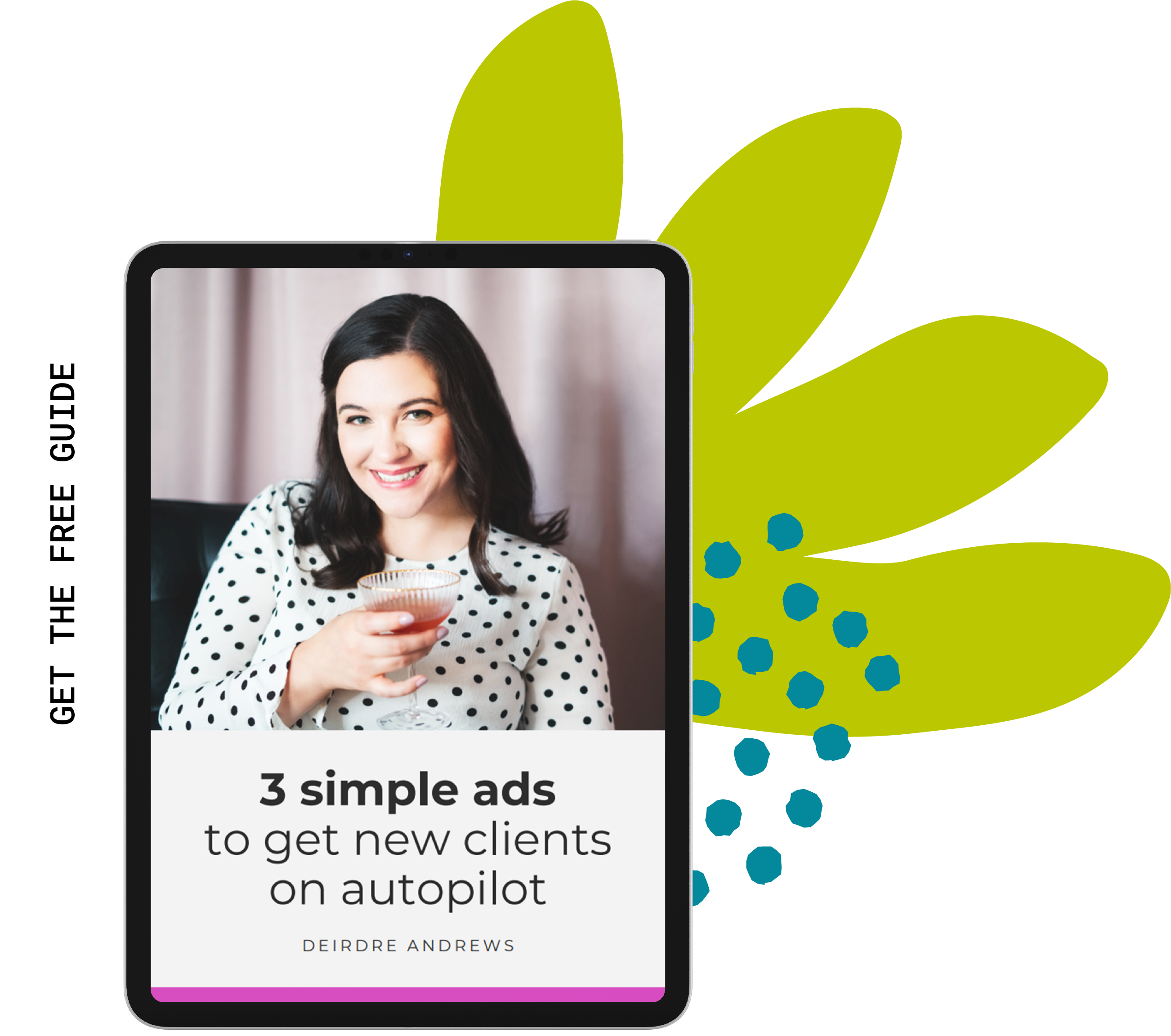Whether you’re just starting to think about running paid ads to grow your local business or you’ve already got your first campaign ready to go, you need to set up some sort of conversion tracking. This is essential for success!
Conversion tracking allows you to measure the effectiveness of your ads by tracking specific actions that people take on your website. You can track pretty much any action you want, but when we walk about conversions, we’re typically talking about your main goal — the most important action that you want people to take.
If you’re a photographer, that might be when someone submits an inquiry form or books a consultation call.
If you’re in the beauty business, a conversion might be when someone books a service appointment online.
Or perhaps you’re in the fitness space and your goal is to get people registering for pilates or dance classes.
In my case, a conversion happens when someone purchases one of my digital workshops or courses.
Whatever your conversion goals may be, tracking these actions will allow you to see which ads are getting the best results and which ones aren’t so great. This information will help you make smarter business decisions and, of course, optimize your campaigns to get the best Return on Investment (ROI).
The Problem with Conversion Tracking
Conversion tracking sounds simple on the surface. Set an advertising goal, tell Google or Facebook where on your website that goal takes place, and optimize your ads for it.
But there’s a problem with this…
When you’re a service-based business, online conversions are actually pretty rare. The vast majority of clicks on your ads and visits to your website will NOT result in a booking or a purchase. Without enough conversion data, Google Ads will have a harder time deciding where to show your ads which can lead to poor deliverability and increased costs. It also makes things difficult for you when trying to understand how your ads are performing.
But just because the booking or the inquiry doesn’t happen right away, that doesn’t mean it won’t happen at all!
The Customer Journey
Let’s think back to the Customer Journey. Most people aren’t going to whip out their wallets and make a purchase immediately after clicking on your ad. Even if your service is something they’re actively looking for, people still need time to get to know you, consider your offer, and compare a few different options before they’re ready to take action.
With that in mind, it’s important to remember that the people clicking on your ads are just that — REAL PEOPLE. And they’re all going to be at different stages of their own customer journey.
Of course, some people may not be interested in you at all. They may click on your ad out of curiosity and realize immediately that what you offer isn’t relevant to them. In which case they’ll leave your site and never come back. That’s just part of advertising.
But others may just need some time to make a decision. It’s these people that you want to connect with and start building relationships with!
So, how can we tell the difference between someone who’s completely uninterested and someone who just needs a bit of time?
How can we use this information to optimize our campaigns?
And how can we follow up with the right people and encourage them to come back?
By tracking Micro Conversions.
What are Micro Conversions and How Can They Help?
A Micro Conversion is exactly what it sounds like — a small conversion! It’s not your main goal. It’s not a booking, it’s not an inquiry, it’s not a purchase…
It’s just a tiny action that signals interest or engagement, which is a step toward your main goal. And tracking these tiny actions is a great way of measuring whether your paid ads are actually generating quality website traffic or just empty clicks.
This data also gets sent back to your Google Ads campaign. Over time, Google’s machine-learning algorithm will be able to work out who is most like to action and will put your ads in front of those people, resulting in more conversions for less money.
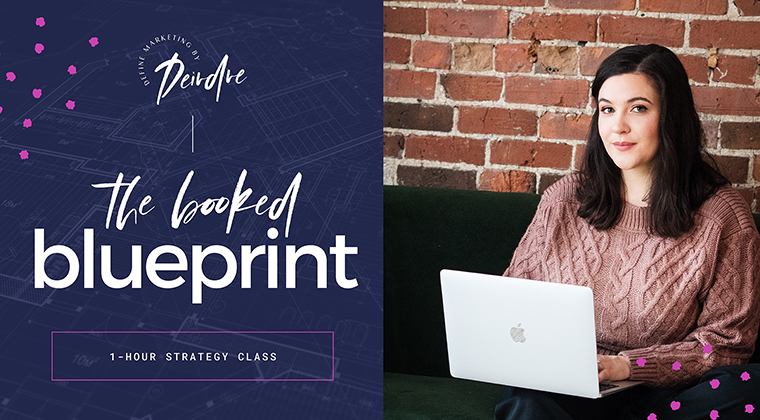
What Micro Conversions Should You Track?
There are endless actions that you can track as Micro Conversions! Pretty much anything that indicates a visitor is engaging with your content.
Perhaps a visitor spends a certain amount of time on your website. This could indicate that they’ve actually read through your content.
Perhaps they’ve visited a certain number of pages. This could mean that they’ve looked into all of your services.
Maybe they’ve even gone as far as clicking on your booking link to look at appointment times. This is a big one right here!
But when you’re just starting out, the quickest and easiest Micro Conversion to track is Scroll Depth. Scroll Depth is an automatic event in Google Analytics 4 (GA4) that gets triggered whenever somebody scrolls 90% of the way down a page of your website.
Scrolling through the page doesn’t necessarily mean that a person is going to book you, and optimizing your ads for scroll depth is no guarantee of a profitable campaign. But when the clicks from your paid ads at least result in a 90% scroll, you can be a little more confident that you’re reaching the right people.
And that’s what online marketing is all about! Getting new eyes on your business and building relationships with those people.
How to Track Scroll Depth in Google Analytics 4 (GA4)
Scroll depth is the easiest Micro Conversion to start with because it’s one of the events tracked automatically in GA4. All you need to do is mark that event as a conversion and import it into Google Ads.
Let’s take a look at how that’s done.
First up, I’m assuming that you have GA4 installed on your website and you’ve linked it to your Google Ads account. If not, you should do that now.
Once everything is set up and linked you’ll need to log in to GA4, navigate to your Admin Settings, and choose Events.
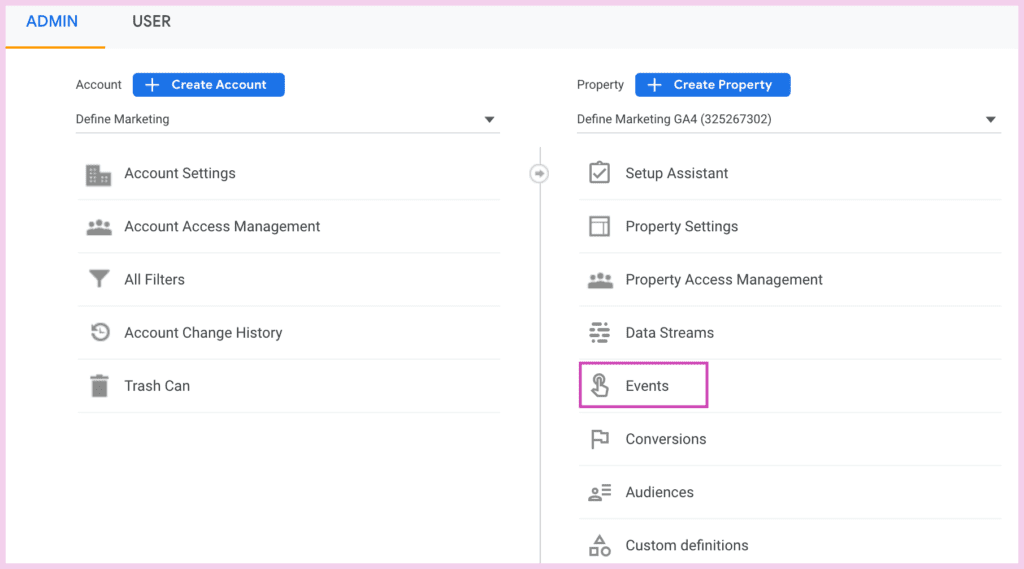
Next, find the default scroll event and click the blue toggle to mark it as a conversion. You don’t need to set the scroll depth as GA4 automatically tracks a scroll event once a visitor reaches 90% of the page.
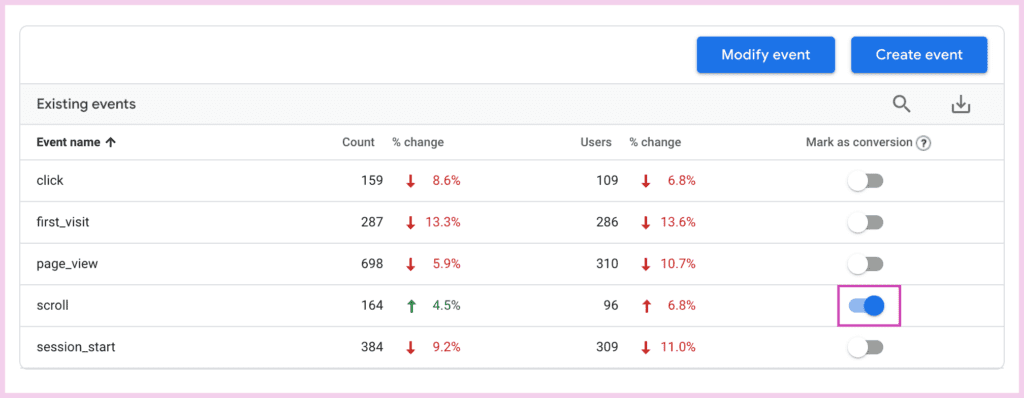
How to Import Your Conversions into Google Ads
Now it’s time to import this conversion into Google Ads. It can sometimes take up to 24 hours for the two platforms to synch, so you may need to wait a bit before moving on to the next step.
Open up your Google Ads dashboard and click on Tools and Settings in the top menu. From there, select Conversions within the Measurement column.
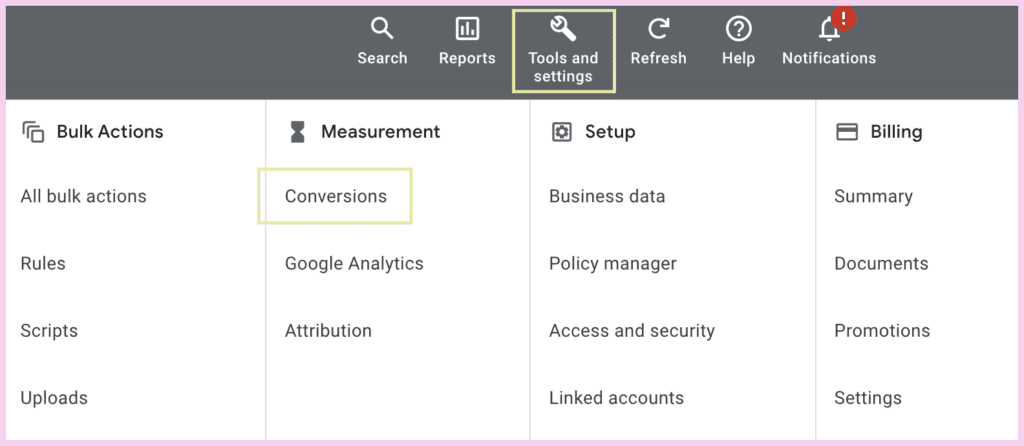
Click New Conversion Action and choose Import. Then you’ll need to select a source to import your conversions from. In this case, you’ve created the Micro Conversion in Google Analytics 4 so you’ll select that and choose Web.
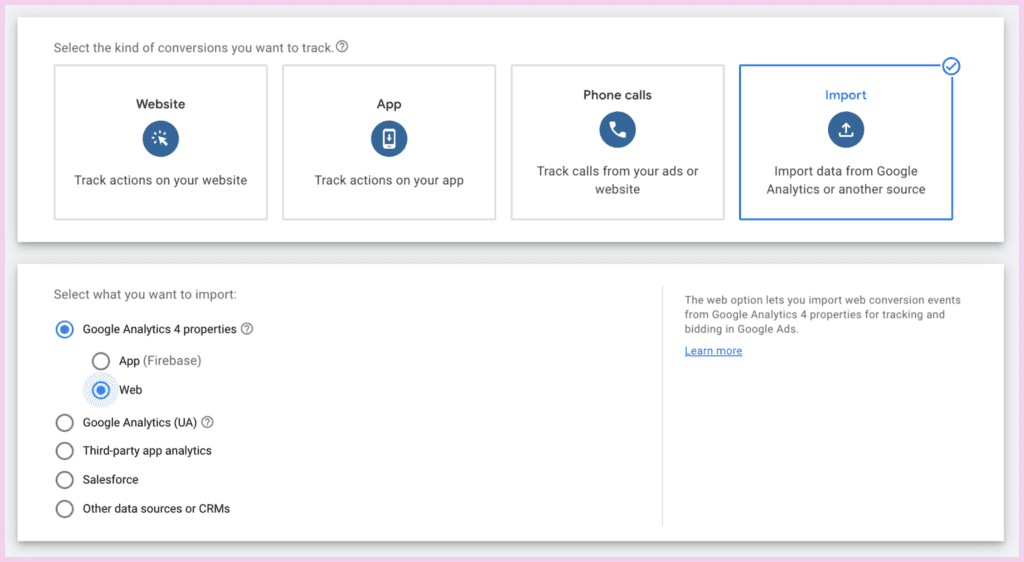
Click to continue, and from there you’ll see the conversion events that have been created in GA4. Select the conversion event you’ve just created — in this case, it’s called scroll — and click Import and Continue.
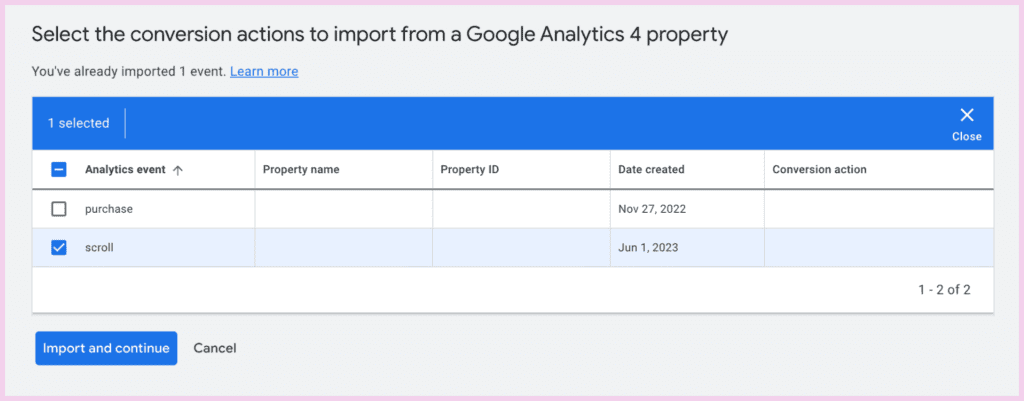
Your new conversion action should now be visible in the Google Ads dashboard.
How to Edit Your Conversion Value
Now that your new Scroll Depth Micro Conversion has been imported into Google Ads, you’ll need to edit the conversion value and the count settings.
Google recommends assigning a dollar value to every single conversion event. In theory, this can help you measure your return on ad spend and make decisions about which keywords and ads are most profitable.
For example, if you were optimizing your Google Ads campaign for Purchases, it would make the most sense to prioritize ads that are generating more revenue.
But it’s difficult to truly calculate the monetary value of someone who scrolls all the way down a page of your site. So I like to keep the value set at $0.
Here’s how that’s done:
In your conversion summary dashboard, select your Scroll Depth Micro Conversion. It’s most likely called (web) scroll. The name of the event may include your website.
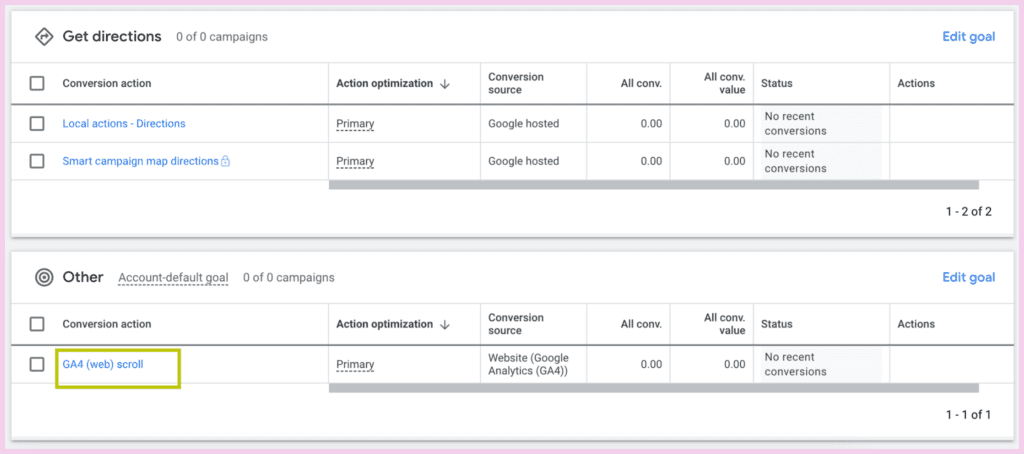
Next, click on Edit Settings in the bottom right corner and then select Value.
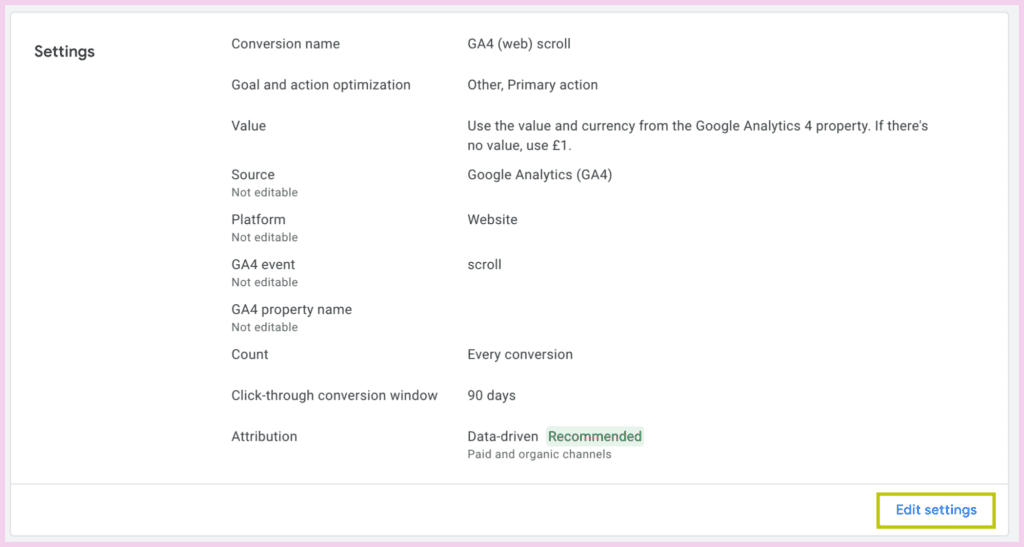
From there, select the option that says “Don’t use a value for this conversion action.” Google doesn’t recommend this, but that’s ok. We don’t want to artificially inflate the monetary value of a simple scroll event.

Once that’s done, be sure to click Save.
How to Edit Your Conversion Count
Last but not least, we need to change your Conversion Count to one.
The Conversion Count tells Google how many times to count each conversion per click or interaction. This is really important.
For purchase events, you’ll want to count every single one. Meaning, if someone clicks on your ad and then makes 3 separate purchases, you’ll want to count all 3 as conversions. That’s because every single purchase is valuable.
But for events like leads, inquiries, or Micro Conversions like scroll depth, we only want to count one event per interaction because only the first event is actually meaningful.
Click Edit Settings again and from there, select Count and change your count to one.

Click Save and then you’re done!
Moving forward you’ll be able to track which ads and keywords are driving the highest level of engagement. And once your campaign has collected enough data, you may decide to change your bidding strategy and optimize specifically for scroll depth.
But that’s a topic for another day!
